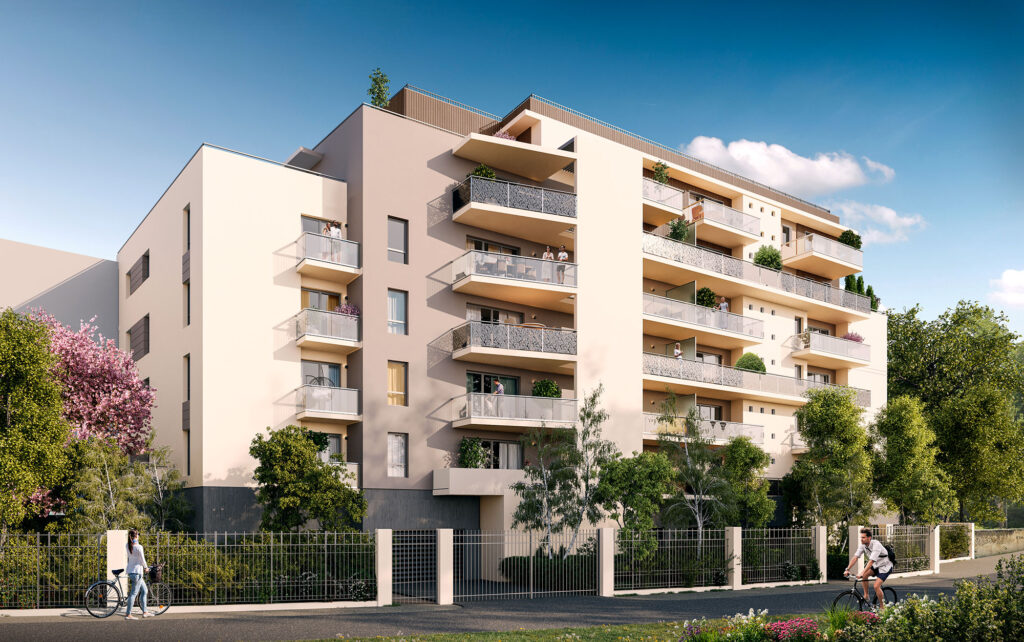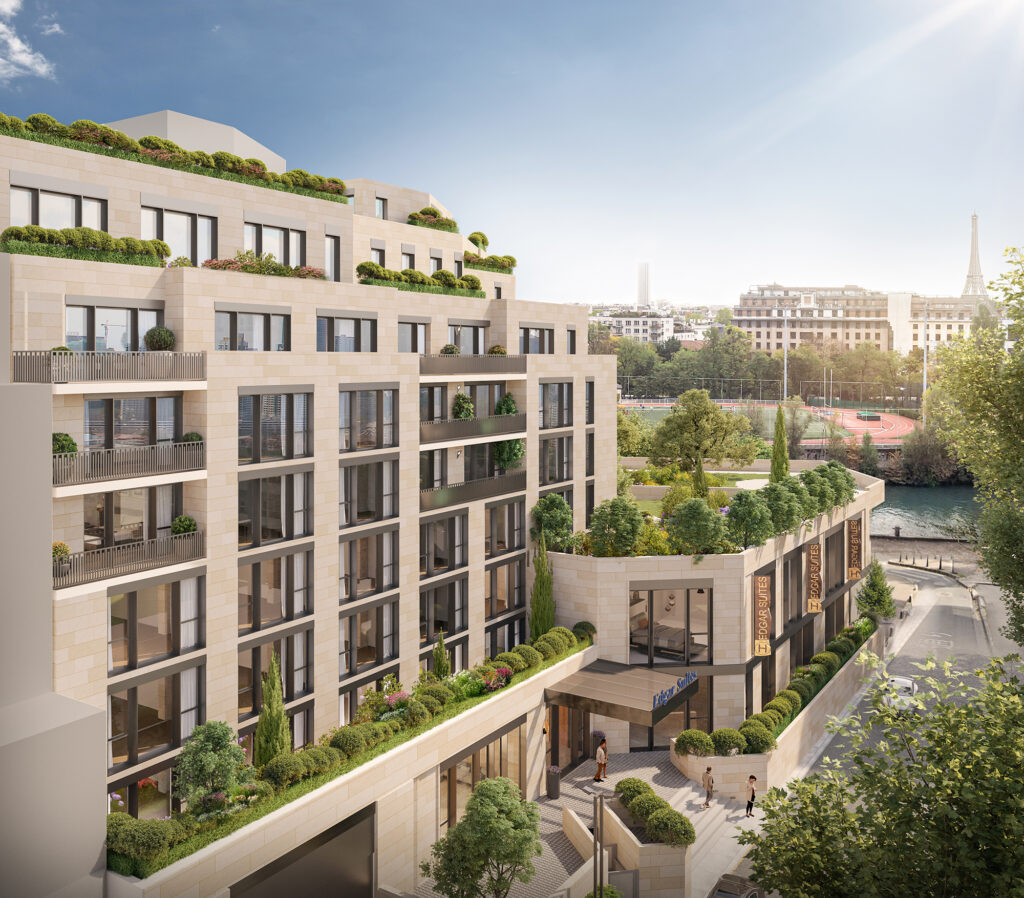The building and construction sector is one of the most polluting. In France, it accounts for a significant proportion of greenhouse gas emissions and energy consumption. Faced with the challenges posed by climate change, it is becoming imperative to integrate the concepts of sustainable development and eco-design into the real estate sector. 3D modeling is a valuable technique for meeting these new ecological requirements for building design and construction. Find out in this article about the process of creating a 3D model of a real estate project used for planning, construction and optimizing energy efficiency.
Integrating eco-design into real estate projects using 3D modeling
Building eco-design involves integrating environmental concerns right from the planning stage. 3D modeling helps achieve this objective by anticipating potential design errors.
Environmentally-friendly design
The realization of a real estate project respecting sustainable development imperatively requires the reduction of the carbon footprint and the saving of resources. 3D modeling, which is the creation or reproduction of a three-dimensional model of a building or real estate project, can play a role in this. Thanks to its realism and precision, this technique makes it possible to create an environmentally-friendly real estate project.
3D modeling is a major asset when it comes to efficiently planning a real estate project before construction work even begins. Thanks to a precise, detailed visualization of the project, designers and builders can evaluate and determine in advance which sustainable materials to use, while taking into account specific customer requirements in terms of architecture and design. They can also determine in advance the most energy-efficient construction techniques.
3D modeling also allows you to create reference models. This means you can build on the 3D models saved in the software, or reuse these models by adding modifications for future real estate projects. This speeds up the process of designing a real estate project, which is a fundamental principle of eco-design.

Error detection
Eco-design and eco-building involve accurate, not approximate, project planning to ensure environmentally-friendly construction. It often happens that work that has already been carried out has to be redone because of design errors discovered later. This results in the use of additional resources, contributing to an increased carbon footprint. By integrating 3D modeling into your project planning, you can avoid these costly mistakes. This is because it enables you to evaluate various scenarios toidentify errors and conflicts before construction begins. In this way, 3D modeling improves the quality and accuracy of the information you need to manage your real estate project.
Reducing construction waste through 3D modeling
3D modeling helps to reduce waste by improving interdisciplinary coordination, saving both time and money.
Improved collaboration between stakeholders
Since the construction of a building involves several disciplines, such as architecture, engineering, plumbing, electricity, etc., it is important to ensure continuity and coherence between the various interventions. 3D and BIM models are the ideal solution for facilitating communication between these players. These are three-dimensional graphic representations of a real estate project, obtained through 3D modeling.
The BIM model integrates the geometric characteristics and all other information required for the realization of the real estate project. By visualizing the project accurately and realistically, each stakeholder can see the dimensions, layout, access points and other details of the project.
While the BIM model facilitates communication between construction professionals, the 3D model facilitates communication with customers. Customers can make customizations and monitor project progress using the 3D model. This avoids the need for post-construction modifications, thus reducing the carbon footprint. What's more, the 3D model or orbital model enables you to effectively communicate the environmental impact of the project to your prospects, reinforcing transparency and responsibility.
Reduced construction costs and lead times
The BIM model, which serves as a construction guide for the various players involved, leaves little room for error, thus reducing wastage of materials and energy. The use of 3D modeling right from the design phase means that costs can be calculated in advance to limit excesses. In this way, you can be sure of making savings on financial and material resources.
In addition to reducing construction costs, this technology also speeds up completion times. The BIM model provides real-time data that optimizes the workflow of the various teams.
What's more, a 3D model can be used to :
- Produce precise plans in a short time;
- Generate bill of materials ;
- Determine equipment data.
In the final analysis, 3D modeling is an essential tool for eco-construction, as it enables optimal management of real estate projects, avoiding waste and inefficiency.

Achieving sustainability goals with 3D modeling
Sustainability, which must be part of your CSR approach, is also a criterion that customers are increasingly looking for. The use of 3D modeling can help you meet this requirement, by simulating energy performance and determining the building's location.
Energy efficiency simulation
Reducing the energy consumption of homes is part of our sustainable development objectives. When you build sustainable buildings, you're making a commitment to the environment. This is a sign of confidence for customers, especially as they prefer more environmentally-friendly, more economical real estate projects.
The BIM model obtained through 3D modeling can be used to simulate and evaluate a building's energy performance before the construction phase. The data obtained will be used by stakeholders throughout the building's lifecycle, from construction, facilities management and maintenance to renovation or demolition.
This energy simulation also enables building performance to be compared with reference data from the French Building Code, sustainable development objectives and environmental certifications. In this way, 3D modeling promotes more sustainable design of your real estate projects.
Location of future building
Last but not least, the concept of eco-design involves carefully choosing the location of the future building. It must fit in well with its environment and meet sustainability criteria. 3D modelling helps stakeholders to better understand the environmental constraints of the construction site. Using the data obtained, they can determine :
- Window orientation according to sunlight ;
- Insulation requirements ;
- The right heating system ;
- Water and electricity production equipment, etc.
As you can see, the environmental approach must be integrated before, during and after the construction of a building. 3D modeling proves to be your best tool in this respect, as it enables continuous consideration of environmental concerns at every stage of the project.
Let us showcase your eco-responsible projects.








